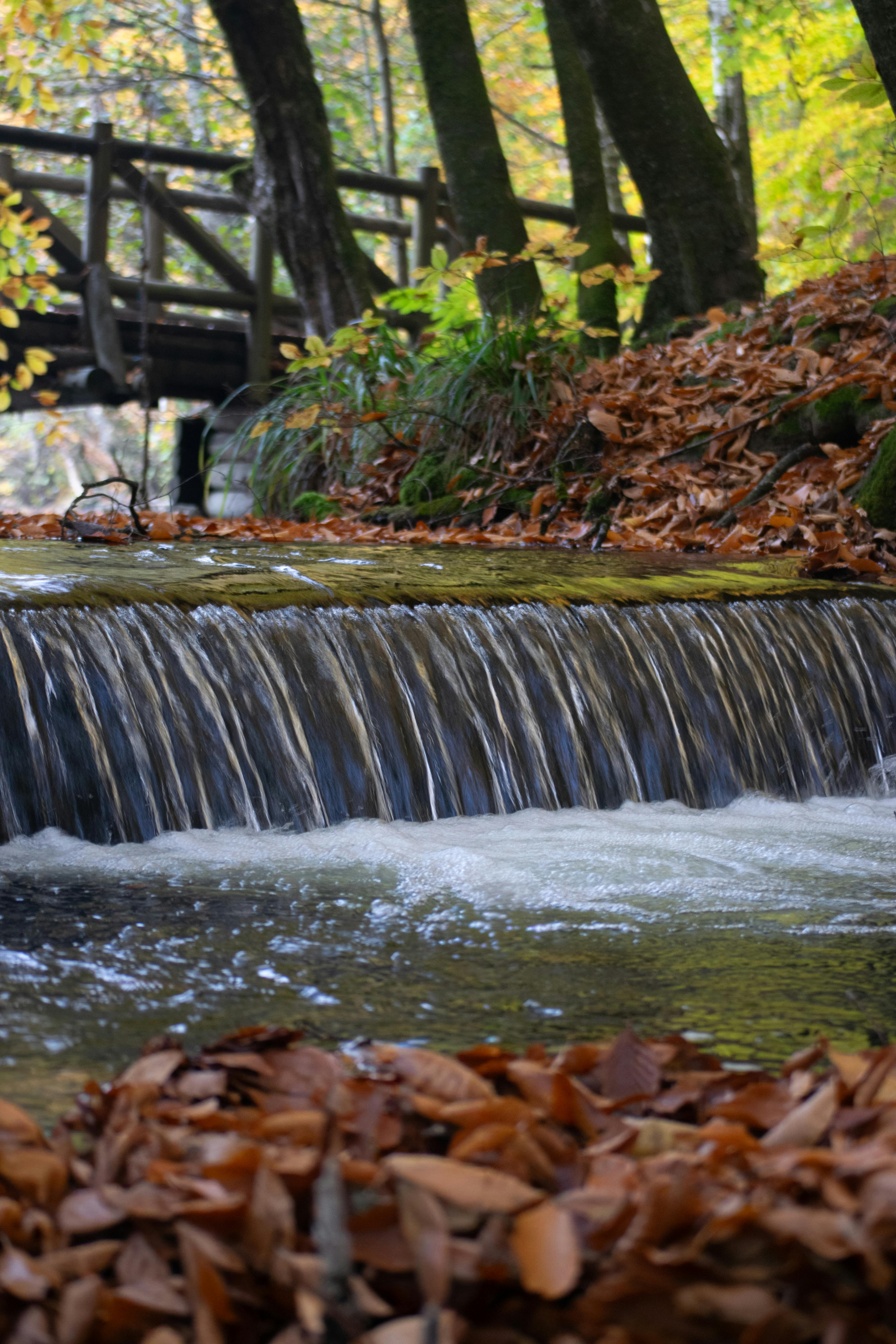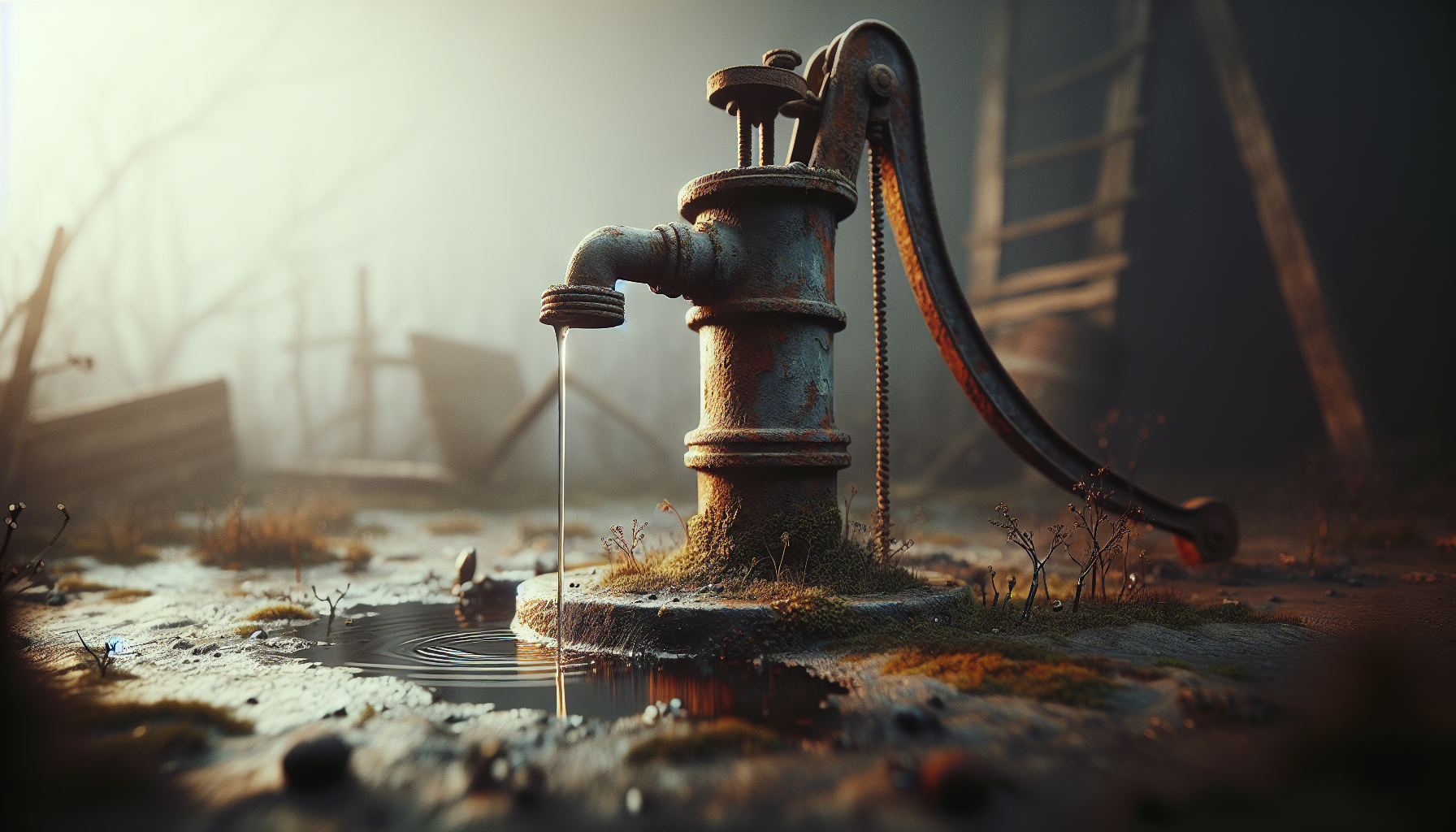Are you noticing changes in your water — like strange smells, less flow, or unusual colors — and wondering if your well needs repair?

What Are Signs That My Water Well Needs Repair?
You rely on your well for daily water, so small changes can mean something needs attention. This section outlines primary warning signs that indicate your well or pump system may require repair or professional inspection.
Reduced Water Pressure or Flow
If your taps suddenly deliver less water or the pressure drops, you should pay attention. Reduced flow often means the pump is struggling, the pump setting is wrong, or the well yield has dropped because of clogging or a falling water table.
- Short, weak showers and slow filling sinks are common early warnings.
- Intermittent flow (works sometimes, then stops) suggests a failing pump, wiring issue, or the pump cycling on and off.
Pump Runs but No Water Comes Out
When the pump runs but no water is produced, you could be facing a loss of prime, a broken pump impeller, a damaged drop pipe, or the pump sitting above the water level.
- This is an urgent situation: continuing to run the pump can damage the motor.
- Shut the pump off and call a professional if you can’t identify a simple cause.
Short Cycling (Pump Turns On and Off Frequently)
If your pump turns on and off rapidly, that’s called short cycling. It often points to problems with the pressure tank, pressure switch, or an internal leak.
- Short cycling wears out the pump motor and can cause premature failure.
- A pressure tank with a waterlogged bladder or incorrect pre-charge commonly causes this.
Strange Noises from the Pump or Well
Unusual sounds — grinding, whining, buzzing, or banging — can signal mechanical issues. You should investigate noises promptly.
- Whining or high-pitched sounds may indicate cavitation or worn bearings.
- Grinding often means mechanical failure inside the pump assembly.
Discolored Water (Brown, Red, Green, or Black)
Color changes are a red flag for contamination or internal corrosion.
- Brown or rust-colored water usually indicates iron or manganese or corrosion in the well or plumbing.
- Green or black slimes can indicate algae or iron bacteria.
- Cloudy, gray, or milky water may indicate suspended solids or air entrainment.
Foul Smells or Odd Tastes
Smells and tastes tell you something about water quality that testing should confirm.
- Rotten egg smell signals hydrogen sulfide gas, often from sulfate-reducing bacteria.
- Chemical odors could indicate agricultural runoff, solvent contamination, or improperly stored chemicals near the well.
- Metallic or salty tastes can point to corrosion or groundwater intrusion.
Visible Sediment or Slime
If you find sand, grit, or slimy biofilm on fixtures, those particles may be entering from a failing screen or collapsed casing, or from biological growth inside the well.
- Sand in the water often points to a failing pump intake or screen or to well casing deterioration.
- Persistent slime may indicate iron bacteria or algae requiring professional cleaning.
Air in Water (Bubbling or Gurgling)
Bubbly water or air whistles in taps suggests air is being drawn into the system through a leak in the suction line or pumps above the water level.
- Air can cause sputtering faucets and can damage pumps if not fixed.
Staining on Plumbing Fixtures or Laundry
Reddish-brown, yellow, or black stains on sinks, tubs, or clothes are signs that iron, manganese, or other minerals are high.
- Staining alone doesn’t always mean the well needs repair, but it does mean you should test and probably treat the water.
Wet Ground or Pooling Water Near the Wellhead
Pooling or a sudden wet area around the wellhead often indicates a leak in the well casing or buried conveyance lines.
- This condition can also allow surface contamination to enter the well; address it quickly.
Damaged or Missing Well Cap or Casing
A cracked or missing cap, exposed openings, or a rusted casing compromises the well’s sanitary seal and can let in contaminants and small animals.
- A sound sanitary seal is critical for preventing contamination and should be repaired immediately.
Elevated Bacteria or Chemical Test Results
If routine water tests show total coliforms, E. coli, nitrates, or volatile organic compounds (VOCs) above acceptable limits, that’s an immediate signal for repair or remediation.
- Positive bacterial tests often mean the well’s sanitary condition is compromised.
- Chemical contamination sometimes requires specialized cleanup or a new source.
What Tests Should You Run If You Suspect a Problem?
You should test water whenever you notice changes in quality or after repairs, flooding, or nearby construction. Regular testing gives you a baseline to notice trends.
Basic Annual Tests
Get these yearly to monitor routine conditions.
- Bacteriological: Total coliform and E. coli
- Nitrate: Especially if you live near agriculture or septic systems
- pH and conductivity/TDS
When to Test Additional Parameters
If you see specific symptoms, add these tests.
- Iron and manganese: staining, metallic taste
- Sulfate and hydrogen sulfide: rotten egg odors
- Volatile organic compounds (VOCs): chemical smells or industrial land use nearby
- Pesticides and herbicides: if down-gradient from farmland
- Lead: if you suspect plumbing corrosion or old pipes
How to Get Accurate Tests
Use a state-certified laboratory and follow sample collection instructions carefully.
- Many counties or health departments have approved labs and sample bottles.
- Improper sampling gives unreliable results and can mislead treatment decisions.
How Do You Prevent Algae in Your Water Well?
Algae in a well or storage tank generally occurs because of light exposure, surface water intrusion, or stagnant conditions that favor photosynthetic organisms and biofilms. Prevention focuses on keeping light, nutrients, and surface water away from the well and tanks.
Why Algae or Biofilm Grow in Wells
Algae need light, warmth, and nutrients. While most drilled wells are too dark deep down for algae, algae or photosynthetic micro-organisms can grow in storage tanks, shallow wells, or near the wellhead if light and nutrients reach the water.
- Organic material, surface water, and warm sunlight promote growth.
- Biofilms and iron bacteria can appear similar to algae: green, black, or slimy.
Secure and Maintain a Proper Well Cap and Sanitary Seal
Preventing algae starts at the top of the well. A tight, sanitary well cap and proper seals prevent light and surface water from entering.
- Use a certified sanitary well cap with a screened vent.
- Replace damaged gaskets or cracked caps immediately.
Keep the Wellhead and Area Clean and Shaded
Keeping the area around the well clean, free of debris, and shaded reduces the chance sunlight reaches any part of the system.
- Maintain a cleared, level surface, and slope the ground away from the well.
- Avoid planting vegetation right next to the well that could allow pooling or root intrusion.
Use Opaque Storage Tanks or Paint Tanks Black
If you use a storage cistern or an aboveground holding tank, make it light-proof.
- Opaque tanks or tanks painted with an opaque coating prevent light penetration and discourage algae.
- Ensure vents are screened so insects can’t enter.
Screen Vents and Keep Them Clean
Vents must allow pressure equalization but keep pests, debris, and insects out.
- Use corrosion-resistant screens and inspect them periodically.
- Replace screens damaged by weather or animals.
Avoid Surface Water Contamination
Algae often hitch a ride with surface water. Prevent surface water from entering around the casing or down annular spaces.
- Maintain the grout or seal around the casing.
- Keep sources of runoff, livestock, and chemicals away from the well.
Shock Chlorination: When and How to Use It
Shock chlorination can control algae and bacteria in wells and tanks, but it’s not always a permanent fix against iron bacteria or severe contamination. Use it as part of a sanitation and prevention program.
- After chlorinating, let the well sit for 12–24 hours (follow local health guidance), then flush until chlorine is gone.
- Repeat if bacteria or slime persist. Persistent problems may require professional rehabilitation.
(See the shock chlorination procedure and calculation section below.)
Mechanical Cleaning and Well Rehabilitation
For persistent slimes, iron bacteria, or algae inside the well, mechanical cleaning by a licensed well contractor may be necessary.
- Methods include brushing, surging, high-pressure jetting, or chlorination with pumping.
- These methods physically remove colonized masses rather than just killing microbes.
Consider Filtration and Disinfection Upstream of the Home
If algae, iron bacteria, or particulates are present, point-of-entry or point-of-use treatment helps protect your plumbing.
- Sediment filters trap particles but may clog quickly during slime episodes.
- Activated carbon filters reduce some organics and taste/odor but can promote biological growth if not maintained.
- UV disinfection kills bacteria but does not remove nutrients or algae directly; combine UV with proper pre-filtration and maintenance.
Shock Chlorination: A Practical Guide (with Calculations)
If you decide to disinfect the well yourself, use safe procedures and appropriate chlorine dosing. If you’re uncomfortable, call a licensed well professional or local health department for assistance.
Safety First
Chlorine is corrosive and an irritant. Use proper personal protective equipment and never mix bleach with acids or ammonia.
- Wear gloves, goggles, and protective clothing.
- Work in a well-ventilated area.
- Keep children and pets away during treatment.
Goal of Shock Chlorination
You want a high free-chlorine concentration in the well and plumbing, typically in the range used by local guidelines (commonly 50–200 ppm) for shock treatments. After a contact time, you’ll flush the system to remove chlorine and dead organisms.
How to Estimate Water Volume in the Well
You need the total volume of water in your well casing plus the household plumbing to calculate how much bleach to add.
- Use this quick formula for gallons per foot of well:
gallons per foot = 0.04079 × (diameter in inches)^2
Example volumes per foot:
- 4-inch casing ≈ 0.65 gallons/ft
- 6-inch casing ≈ 1.47 gallons/ft
- 8-inch casing ≈ 2.61 gallons/ft
Calculate water volume in the well: gallons_in_well = gallons_per_foot × depth_of_water_column
- Depth of water column = distance from water level to top of casing
Don’t forget to add the volume of household plumbing and any storage tank (ask manufacturer or a plumber).
Chlorine Amounts: Basic Calculation Method
Household bleach (typical concentration) is often 5.25% available chlorine. The following formula estimates how much bleach to reach a target ppm:
Required bleach (mL) = (Desired ppm × Volume in liters) ÷ (Bleach concentration in mg/mL)
- For household bleach at ~5.25% (approx. 52.5 mg/mL of active chlorine):
- Required mL ≈ (Desired ppm × Volume in liters) ÷ 52.5
Example:
- If you have 1,000 gallons (≈ 3,785 L) and want ~100 ppm:
- Required mg chlorine = 100 mg/L × 3,785 L = 378,500 mg
- Required mL bleach ≈ 378,500 ÷ 52.5 = 7,210 mL ≈ 7.2 L (≈ 1.9 gallons)
Example Table: Approximate Bleach Amounts for Common Well Volumes
Use these as general guidance. Exact amounts depend on bleach strength and actual water volume (plumbing included).
| Water Volume (gallons) | Target 50 ppm (approx.) | Target 100 ppm (approx.) | Target 200 ppm (approx.) |
|---|---|---|---|
| 100 | 0.2 qt (≈ 6 fl oz) | 0.4 qt (≈ 12 fl oz) | 0.8 qt (≈ 24 fl oz) |
| 500 | 1.0 qt (≈ 32 fl oz) | 2.0 qt (≈ 64 fl oz / 2 qt) | 4.0 qt (≈ 128 fl oz / 1 gal) |
| 1,000 | 2.0 qt (≈ 64 fl oz / 0.5 gal) | 1.9 gal ≈ 1.9 gal* | 3.8 gal* |
| 2,000 | 3.8 gal | 7.6 gal | 15.2 gal |
*Use the calculation section to fine-tune for your bleach concentration. These are approximations: always calculate precisely or consult a professional.
Step-by-Step Shock Chlorination Procedure
- Determine the total water volume (well column + plumbing + tank).
- Calculate the required bleach amount using the formula above.
- Turn off power to the pump and remove the well cap (or follow manufacturer guidance).
- Pour the calculated bleach diluted in a bucket of water down the well casing or as directed by a professional. Avoid splashing.
- Circulate the chlorinated water by turning on the pump until you can smell chlorine at indoor taps; this ensures distribution through the plumbing.
- Turn off the pump and leave the chlorinated water in the system for the recommended contact time (commonly 12–24 hours; follow local guidance).
- After contact time, flush the system by running faucets starting with outdoor hose and continuing until chlorine smell is gone.
- Shock may temporarily bleach clothes and harm plants; avoid irrigation while flushing.
- Retest for bacteria after the system is clear of chlorine (often 7–10 days later) to confirm disinfection.
Limitations of Shock Chlorination
- It may not remove iron bacteria completely or structural problems.
- Persistent contamination often requires professional well rehabilitation or even well replacement.
- If chlorination doesn’t clear positive lab tests, hire a licensed well contractor.

When Should You Call a Professional?
Some tasks are best left to licensed well contractors, pump technicians, or local health officials. Call a professional if you encounter any of the following:
- Pump won’t operate, or pump runs but produces no water.
- You have repeated coliform/E. coli positives after chlorination.
- Strong chemical contamination or VOC detection.
- Structural damage to casing, cap, or wellhead.
- Continuous sand production or severe turbidity.
- Multiple household fixtures are affected, and the problem is system-wide.
- You suspect the well is drawing in surface water or sewage.
A professional can perform diagnostics, pump tests, well video inspections, rehabilitation, or safe abandonment and replacement if necessary.
Typical Repair and Replacement Costs (Ballpark)
Costs vary widely by region, system size, and complexity, but these ranges give you an idea.
| Repair Type | Typical Cost Range (USD) |
|---|---|
| Pressure switch or gauge replacement | $100–$400 |
| Pressure tank repair/replace | $300–$1,200 |
| Basic pump repair (minor) | $200–$1,000 |
| Pump replacement (submersible) | $800–$4,000+ |
| Well rehabilitation (cleaning, surging) | $300–$3,000 |
| Hydrofracturing / development | $1,000–$6,000 |
| New drilled well | $5,000–$30,000+ |
Prices are approximate. Obtain multiple quotes and ask for licensing and references.

Preventive Maintenance Checklist
A short, regular checklist helps you catch small problems before they grow into big repairs.
- Annually test water for bacteria and nitrates.
- Inspect well cap and casing for cracks or missing seals.
- Keep the area clear of chemicals, fuels, and livestock runoff.
- Maintain proper drainage around the well; slope soil away from the casing.
- Service the pressure tank and check pre-charge per manufacturer guidance.
- Replace transient filters and cartridges on schedule.
- If you have a storage tank, keep it light-proof and clean vents/screens.
- Document test results and any repairs to watch trends over time.
Troubleshooting Quick Tips
- No water, pump runs: Stop running pump, check for visible damage, call a technician.
- Sporadic pressure: Check pressure tank and switch; measure tank pre-charge when empty of water.
- Sand in water: Stop using abrasive appliances and contact a well professional — continued use can damage valves and appliances.
- Rotten egg smell: Run all taps to see if smell is in hot water only (water heater issue) or entire system; test for hydrogen sulfide and bacteria; consider shock chlorination.
- Green or slimy deposits: Clean storage tanks, replace caps, and consider chlorination and filtration.

Final Notes: Prioritize Safety and Testing
You can handle some maintenance tasks, but many well issues affect health and system integrity. Always prioritize water testing and safety.
- If tests show bacterial contamination, don’t drink the water until corrected and retested.
- Boiling kills bacteria but doesn’t remove chemical contaminants; use bottled water for drinking if chemicals are suspected.
- When in doubt, consult your local health department or a licensed well professional.
If you follow these inspection steps, testing routines, and prevention measures, you’ll be in a strong position to identify problems early and stop algae or other contamination from becoming a major issue. Regular attention to the wellhead, sanitary seals, and water test results is your best defense against costly and unsafe failures.

